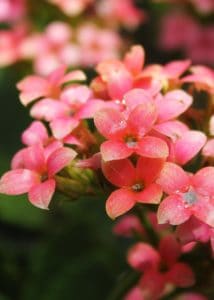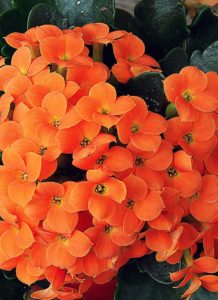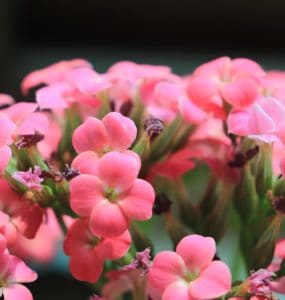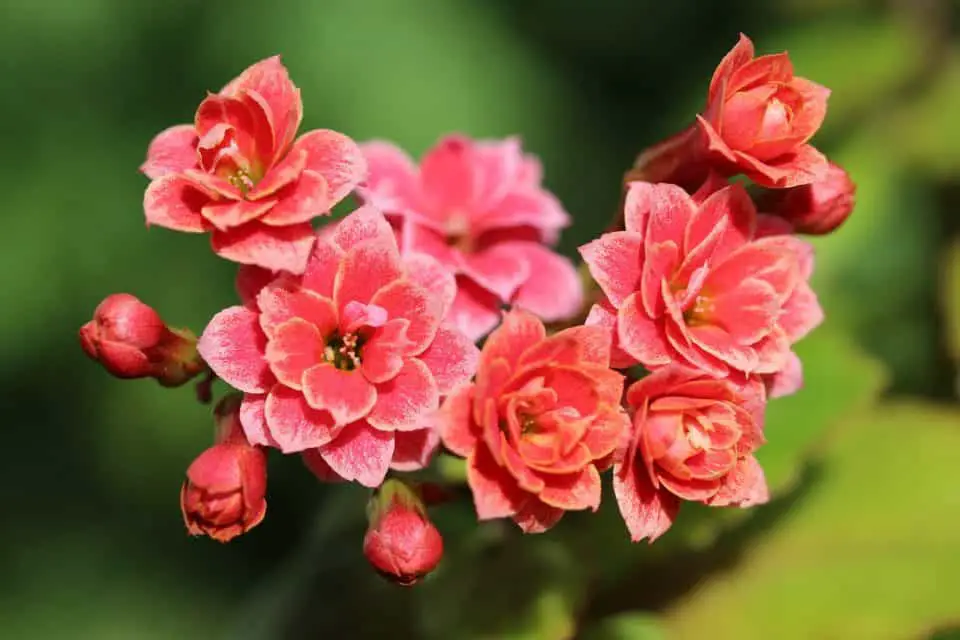Some links in the post are affiliate links and I get a commission from purchases made through some links found in the post.
Are you having trouble with diseases on your kalanchoe plant? If yes, here’s a simple tip to remember.
Most, if not all, Kalanchoe diseases result from insufficient care practices. It’s often something that you are doing or not doing, for example you could be underwatering or overwatering your kalanchoe.
Proper care will stop pest infestations and diseases like powdery mildew.
Thus, as we go about the most common problems and diseases with the kalanchoe plant, we will also touch on the best way to care for it. Here goes:
What to do with a Leggy Kalanchoe Plant?
Legginess with your kalanchoe plant comes down to three main factors- the pruning care, access to sunlight, and the pot’s size.
If one area is lacking, the plant may start showing leggy growth, robbing you of the opportunity to have a bushy plant beautifying your space. Let’s focus on all three possibilities:
Pruning Care
 Most Kalanchoe varieties start to exhibit legginess after they have been potted for a few years. If you want them to remain bushy, you will need to prune the flowers.
Most Kalanchoe varieties start to exhibit legginess after they have been potted for a few years. If you want them to remain bushy, you will need to prune the flowers.
Once the plant finishes blooming, you will need to cut back any unwanted growth. Keep in mind that these plants bloom every year.
So, how should you cut it back? Work on cutting out up to a third of the stem’s length. That way, in the next season, the growth will be strong and healthy.
Consider the plant’s shape as you cut back and prune in a manner that does not harm the plant’s aesthetics.
Where a stem is dead or has undergone substantial damage, you are better off starting again. Cut the stem at its base or where the branch meets the stem.
Shaping the plant is also easy. Locate a leaf node pointing in the desired direction of growth. Cut the stem at a 45-degree angle using clean shears.
The new growth will move towards the direction of the leaf node. Please note that you must sterilize all pruning tools. Else, they can act as an avenue for contamination, damaging the plant.
You may also like: How do you fix a leggy wandering Jew plant?
Repotting
Kalanchoes are succulents, and these makes them ideal for anyone looking to adopt minimal care practices.
They can live in the same pot for years on end without the need for repotting. Even so, you may need to repot them after a while.
You can tell it’s time to repot if roots start sticking out of the pot’s drainage holes or showing on the surface of the soil.
If the water sits longer on the soil than it did in the past, you may need to look into if your plant is rootbound.
When repotting, look for a larger pot where the plant can keep growing for a while before it is due for another change.
If you already like your plant’s size and do not want to move it to another container, you can always prune the roots.
Remove the plant from the container and use clean tools to cut back a significant chunk of the roots.
Please note that working with a pot that is too large will make the plant focus its energy on filling the pot with its roots.
It can make the plant’s growth stunt for a while, and you may want to consider this when making any changes.
Lighting
Another key issue you may be facing is a lack of adequate light exposure. Kalanchoes do well in rooms with access to bright and natural light.
Please note that this does not mean that the plant should be in direct sun. If anything, leaving the plant in full sun can stunt its growth.
Any high temperatures can also cause this stunting. The best approach is to leave the plant near full light, ensuring that the rays do not hit the plant directly.
This way, the flowers will be much brighter, giving your indoors a boost in aesthetics.
If the light is not enough, the Kalanchoe, like many other light-loving plants, will start growing in the direction of the light. Over time, this will show as legginess.
Why are my Kalanchoe Leaves Soft?
The Kalanchoe is a resilient plant that does well in almost all regions. But like any other plant, it also has its limits, more so when it comes to watering.
Giving it too much water would only harm the plant. Remember that this is a succulent. Thus, it takes up water which it stores in its leaves and stems.
You can tell that your plant is overwatered if it has soft and mushy leaves whose color seems lighter than usual.
Depending on the overwatering extent, the leaves may also appear translucent and may come off to the touch.
So, what happens when you overwater the plant? The roots take up what they can and when they cannot finish it, they start rotting on account of sitting in water for extended periods.
On the plus side, once you notice that the plant is in danger, you can save it through timely action.
First, you need to watch out for signs of overwatering, such as the softening of leaves and the change of color and texture in the leaves.
If these are present, you need to stop watering immediately and allow the soil to dry completely before watering it again.
In some cases, you may have to repot the plant by changing the potting mix and cutting off the damaged parts of the roots.
And if the situation is dire, you may have to propagate a new plant from a cutting of the older plant. The sooner you act, the less likely you will have to resort to extreme measures.
Why does my Kalanchoe Have Wrinkled Leaves?
 As much as overwatering is bad, giving your plant less water than it needs can also be to blame for its death. This can cause your wrinkled leaves on your kalanchoe.
As much as overwatering is bad, giving your plant less water than it needs can also be to blame for its death. This can cause your wrinkled leaves on your kalanchoe.
An underwatered plant features wrinkled and weak leaves that soon start drooping as the plant wilts and slowly dies.
It results from a lack of water in the stems and leaves because the roots cannot absorb enough to keep the plant alive.
The good news is that saving an underwatered plant is much easier than saving one with root rot.
All you need is to embrace good watering techniques, and the plant will respond by perking up in a few days.
Once the plant is back in good health, please observe the proper watering regimens.
How Often Should you Water a Kalanchoe?
Always ensure the soil is dry before watering it. The best way to check if your kalanchoe should be watered is by sticking a finger an inch into the soil.
If it feels dry, you can water it. If not, check the next day. Where you have trouble gauging the need for watering, use a moisture gauge.
Please note that proper watering techniques are not sufficient to keep the plant healthy.
You should also ensure that the pot has adequate drainage; else, the roots will still sit in water each time you water them, even if you space the watering.
How do you Treat Powdery Mildew on a Kalanchoe?
Powdery mildew on your kalanchoe results from the spread of fungus and exhibits as white spots on the plant’s leaves. If the disease progresses without any intervention, the plant can die.
Please note that this disease easily spreads from one plant to another via air and needs to be contained immediately.
Spray the plant with a fungicide and take note of your watering techniques. Make sure the plant is not overwatered.
Also, you need to avoid providing the plant with dry air and high-temperature conditions in which this fungus thrives.
Why are my Kalanchoe Leaves Turning Yellow?
Your kalanchoe plant can turn yellow for several reasons. One is lack of light, especially during winter.
We covered what you can do when there is access to natural light. But in winter, you need to go a step further and invest in artificial lighting.
Two is low air temperature. This plant generally dislikes temperatures below 10°C and will start yellowing as the temperatures drop.
You will need to move the plant to an area with adequate heating or supplement what’s available in the home.
Third, we have improper watering techniques. In this case, you can either be overwatering or underwatering the plant, any of which can be fatal.
Why are my Kalanchoe Leaves Curling Up?
Where you do not keep up with recommended care practices, the kalanchoe plant becomes susceptible to diseases. Curling leaves are often a sign of a virus attack.
You can check if this is the case by watching out for black spots on the leaf surfaces.
If these are present, they are warning signs that parasitic fungi have made a home in your plant.
These fungi infest plants growing in low temperatures and those that are watered too much. You need to change the soil to deprive the fungi of a home and cut off all damaged leaves.
Also, you must reduce the watering frequency and move the plant to a warmer area of the house.
Please note that wet and cold conditions can also pave the way for gray mold, which is just as bad.
Final Thoughts: How to Fix Your Kalanchoe Diseases
 For a succulent, the Kalanchoe is pretty easy to care for, provided you keep up with the required care practices.
For a succulent, the Kalanchoe is pretty easy to care for, provided you keep up with the required care practices.
Anytime you come across a problem, question what you can do differently regarding the care routines to fix your kalanchoe diseases.
Before you go, here are some more related articles I encourage you to read below to help solve more of your gardening issues:
How to fix your ming aralia problems
10 Most Common Fatsia Japonica Problems
How to Save a Dying Dracaena Marginata Plant
Happy Gardening!
Written by: Daisy Njeri

